Chrysler 2008 Annual Report Download - page 22
Download and view the complete annual report
Please find page 22 of the 2008 Chrysler annual report below. You can navigate through the pages in the report by either clicking on the pages listed below, or by using the keyword search tool below to find specific information within the annual report.-
 1
1 -
 2
2 -
 3
3 -
 4
4 -
 5
5 -
 6
6 -
 7
7 -
 8
8 -
 9
9 -
 10
10 -
 11
11 -
 12
12 -
 13
13 -
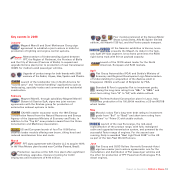 14
14 -
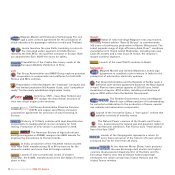 15
15 -
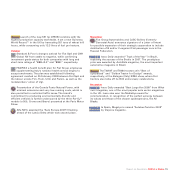 16
16 -
 17
17 -
 18
18 -
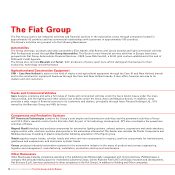 19
19 -
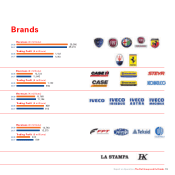 20
20 -
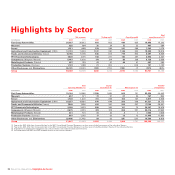 21
21 -
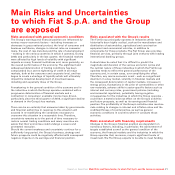 22
22 -
 23
23 -
 24
24 -
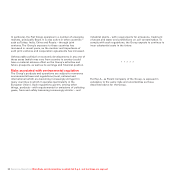 25
25 -
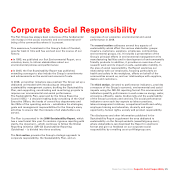 26
26 -
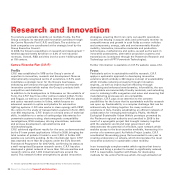 27
27 -
 28
28 -
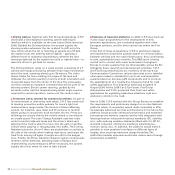 29
29 -
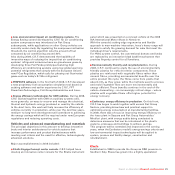 30
30 -
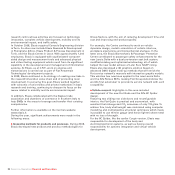 31
31 -
 32
32 -
 33
33 -
 34
34 -
 35
35 -
 36
36 -
 37
37 -
 38
38 -
 39
39 -
 40
40 -
 41
41 -
 42
42 -
 43
43 -
 44
44 -
 45
45 -
 46
46 -
 47
47 -
 48
48 -
 49
49 -
 50
50 -
 51
51 -
 52
52 -
 53
53 -
 54
54 -
 55
55 -
 56
56 -
 57
57 -
 58
58 -
 59
59 -
 60
60 -
 61
61 -
 62
62 -
 63
63 -
 64
64 -
 65
65 -
 66
66 -
 67
67 -
 68
68 -
 69
69 -
 70
70 -
 71
71 -
 72
72 -
 73
73 -
 74
74 -
 75
75 -
 76
76 -
 77
77 -
 78
78 -
 79
79 -
 80
80 -
 81
81 -
 82
82 -
 83
83 -
 84
84 -
 85
85 -
 86
86 -
 87
87 -
 88
88 -
 89
89 -
 90
90 -
 91
91 -
 92
92 -
 93
93 -
 94
94 -
 95
95 -
 96
96 -
 97
97 -
 98
98 -
 99
99 -
 100
100 -
 101
101 -
 102
102 -
 103
103 -
 104
104 -
 105
105 -
 106
106 -
 107
107 -
 108
108 -
 109
109 -
 110
110 -
 111
111 -
 112
112 -
 113
113 -
 114
114 -
 115
115 -
 116
116 -
 117
117 -
 118
118 -
 119
119 -
 120
120 -
 121
121 -
 122
122 -
 123
123 -
 124
124 -
 125
125 -
 126
126 -
 127
127 -
 128
128 -
 129
129 -
 130
130 -
 131
131 -
 132
132 -
 133
133 -
 134
134 -
 135
135 -
 136
136 -
 137
137 -
 138
138 -
 139
139 -
 140
140 -
 141
141 -
 142
142 -
 143
143 -
 144
144 -
 145
145 -
 146
146 -
 147
147 -
 148
148 -
 149
149 -
 150
150 -
 151
151 -
 152
152 -
 153
153 -
 154
154 -
 155
155 -
 156
156 -
 157
157 -
 158
158 -
 159
159 -
 160
160 -
 161
161 -
 162
162 -
 163
163 -
 164
164 -
 165
165 -
 166
166 -
 167
167 -
 168
168 -
 169
169 -
 170
170 -
 171
171 -
 172
172 -
 173
173 -
 174
174 -
 175
175 -
 176
176 -
 177
177 -
 178
178 -
 179
179 -
 180
180 -
 181
181 -
 182
182 -
 183
183 -
 184
184 -
 185
185 -
 186
186 -
 187
187 -
 188
188 -
 189
189 -
 190
190 -
 191
191 -
 192
192 -
 193
193 -
 194
194 -
 195
195 -
 196
196 -
 197
197 -
 198
198 -
 199
199 -
 200
200 -
 201
201 -
 202
202 -
 203
203 -
 204
204 -
 205
205 -
 206
206 -
 207
207 -
 208
208 -
 209
209 -
 210
210 -
 211
211 -
 212
212 -
 213
213 -
 214
214 -
 215
215 -
 216
216 -
 217
217 -
 218
218 -
 219
219 -
 220
220 -
 221
221 -
 222
222 -
 223
223 -
 224
224 -
 225
225 -
 226
226 -
 227
227 -
 228
228 -
 229
229 -
 230
230 -
 231
231 -
 232
232 -
 233
233 -
 234
234 -
 235
235 -
 236
236 -
 237
237 -
 238
238 -
 239
239 -
 240
240 -
 241
241 -
 242
242 -
 243
243 -
 244
244 -
 245
245 -
 246
246 -
 247
247 -
 248
248 -
 249
249 -
 250
250 -
 251
251 -
 252
252 -
 253
253 -
 254
254 -
 255
255 -
 256
256 -
 257
257 -
 258
258 -
 259
259 -
 260
260 -
 261
261 -
 262
262 -
 263
263 -
 264
264 -
 265
265 -
 266
266 -
 267
267 -
 268
268 -
 269
269 -
 270
270 -
 271
271 -
 272
272 -
 273
273 -
 274
274 -
 275
275 -
 276
276 -
 277
277 -
 278
278 -
 279
279 -
 280
280 -
 281
281 -
 282
282 -
 283
283 -
 284
284 -
 285
285 -
 286
286 -
 287
287 -
 288
288 -
 289
289 -
 290
290 -
 291
291 -
 292
292 -
 293
293 -
 294
294 -
 295
295 -
 296
296 -
 297
297 -
 298
298 -
 299
299 -
 300
300 -
 301
301 -
 302
302 -
 303
303 -
 304
304 -
 305
305 -
 306
306 -
 307
307 -
 308
308 -
 309
309 -
 310
310 -
 311
311 -
 312
312 -
 313
313 -
 314
314 -
 315
315 -
 316
316 -
 317
317 -
 318
318 -
 319
319 -
 320
320 -
 321
321 -
 322
322 -
 323
323 -
 324
324 -
 325
325 -
 326
326 -
 327
327 -
 328
328 -
 329
329 -
 330
330 -
 331
331 -
 332
332 -
 333
333 -
 334
334 -
 335
335 -
 336
336 -
 337
337 -
 338
338 -
 339
339 -
 340
340 -
 341
341 -
 342
342 -
 343
343 -
 344
344 -
 345
345 -
 346
346 -
 347
347 -
 348
348 -
 349
349 -
 350
350 -
 351
351 -
 352
352 -
 353
353 -
 354
354 -
 355
355 -
 356
356
 |
 |
Risks associated with general economic conditions
The Group’s earnings and financial position are influenced by
various macro-economic factors – including increases or
decreases in gross national product, the level of consumer and
business confidence, changes in interest rates on consumer
loans, the cost of raw materials and the rate of unemployment
– existing in the various countries in which it operates. During
2008, and particularly in the last quarter, the financial markets
were affected by high levels of volatility with significant
impacts on many financial institutions and, more generally, on
the overall performance of the economy. The significant and
widespread deterioration of trading conditions has been
compounded by a severe tightening of credit in all major
markets, both at the consumer and corporate level, and has
begun to create a shortage of liquidity which will ultimately
impact the industrial development of most businesses,
including and especially those of the Group.
A weakening in the general condition of the economy and in
the industries in which the Group operates combined with a
progressive deterioration of financial markets and a
contraction in consumers’ available income have driven,
particularly since the third quarter of 2008, a significant decline
in demand in the Group’s key markets.
There can be no certainty that measures taken by governments
and financial authorities in response to this situation will
succeed in re-establishing the conditions necessary to
overcome this situation in a reasonable time. Therefore,
uncertainty remains as to the period of time necessary to
restore normal trading conditions and many countries are
aware that their economies could undergo a severe and
protracted recession.
Should the current weakness and uncertainty continue for a
sufficiently long period, the Group’s business, strategy and
future prospects could be negatively affected with consequent
negative impacts on its earnings and financial position.
Risks associated with the Group’s results
The Fiat Group principally operates in industries which have
historically been highly cyclical, such as the manufacture and
distribution of automobiles, agricultural and construction
equipment and commercial vehicles, in addition to
components for those products. The Fiat Group also provides
financial services, primarily through joint ventures with leading
international banking groups.
It should also be noted that it is difficult to predict the
magnitude and duration of the various economic cycles and
the cyclical nature of those industries in which the Fiat Group
operates tends to reflect the general performance of the
economy and, in certain cases, even amplifying the effect.
Therefore, any macro-economic event - such as a significant
downturn in a key market, volatility in financial markets and
the consequent deterioration of capital markets, increases in
energy prices, fluctuations in the price of commodities or other
raw materials, adverse shifts in sector-specific factors such as
interest and currency rates, government policies (including
environmental regulation), potentially having negative
consequences for the industries in which the Group operates -
could have a material adverse effect on the Group’s activities
and future prospects, as well as its earnings and financial
position. The profitability of the Group’s activities also involves
risks relating to changes in interest and inflation rates and the
creditworthiness of counterparties, as well as general
economic conditions in countries where it conducts those
activities.
Risks associated with financing requirements
Changes in the Group’s financial position are dependent on
numerous factors, including, in particular, the achievement of
targets established as well as the general condition of the
economy, the financial markets and the industries in which the
Group operates that, moreover, require significant levels of
investment. The Fiat Group expects to be able to meet funding
Report on Operations Main Risks and Uncertainties to which Fiat S.p.A. and the Group are exposed 21
Main Risks and Uncertainties
to which Fiat S.p.A. and the Group
are exposed
